Notes
Protesters vs. Props for Freedom: College Athletes Can’t Breathe Either
In recent weeks, the sports world has become an increasingly visible site for social protest. In the wake of Grand Juries deciding not to indict police officers for the deaths of Michael Brown and Eric Garner, athletes have used their platform as public figures to lament what feels to many to be a judicial and moral failure.
As The Bag has noted, the “Hands Up, Don’t Shoot” gesture displayed by the St. Louis Rams or the statement made by LeBron James and other NBA players in wearing an “I Can’t Breathe” t-shirt are not mere footnotes to the national dialogue on racial justice. Rather, they are reminders that athletes are citizens, too, and that protests in and through sport are a critical component of our political culture.
I find all of these gestures important, but I think it’s worth lingering over the photo of members of the Georgetown men’s basketball team. According to coach John Thompson, the team made a collective decision to wear the “I Can’t Breathe” shirts after thorough discussions about the message’s meaning(s) and the reactions it might provoke. What is remarkable to me about this moment is that college athletes are so rarely given the freedom (more on that in a moment) to express their political views, especially in a team sport. Most often, athletes are reminded that they are part of a team; specifically, one that must defer to its coaches and athletic department officials. So, when a team expresses a political viewpoint, it is typically not their own but one prescribed for them by their leaders.
What might such expressions look like? Consider just how commonplace it has become for college teams—especially in football and men’s basketball—to function as billboards for the latest pronouncement of American patriotism and pride.
These are Northwestern football players wearing specially-themed jerseys in honor of 9/11. They are representative of what many Division I college football teams have worn in recent years, including the obvious markers of red, white, and blue, as well as the substitution of player names for declarations of “honor” and “freedom” (again, more on that in a moment).
These are members of the men’s basketball teams from Michigan State and the University of North Carolina, on board the USS Carl Vinson in the inaugural “Carrier Classic,” played on Veterans Day in 2011. Notice that the signature Carolina blue and Spartan green have been augmented to give the appearance of military fatigues. The back of each jersey is simply labeled, “U.S.A.”
The visuals here are striking, if only for their portrayal of the overt conflation of American identity with militarism. In the present moment, they are striking because they signify the degree to which scholarship athletes in American universities are used simultaneously as props for marketing and as metaphors for acquiescence to authority and presumed American values. Such instances are fundamentally, inarguably, political. They make plain the institutional entanglements of college sports, American politics, and corporate media. Being patriotic basketball players makes for good television—it provides viewers with “good kids” who understand “what’s really important.”
So, what is really important, then? Is it knowing when to listen to your coach? Is it saying you’re proud to play for “Team U.S.A.” when being interviewed after the game? Is it giving thanks to the military for fighting for your “freedom?” Ah, yes, freedom. So often, these patriotic and militaristic images are justified rhetorically for their capacity to honor our freedom. The irony, then, is that these players are rarely given the agency to demonstrate any sense of freedom; rather, they are simply following orders, all under the pretense that everyone is eager to celebrate America.
The photo of the Georgetown players gives us a very different moment, and I think it presents a compelling tension. If the endless stream of images of athletes wearing red, white, and blue are supposed to symbolize freedom, then the images of athletes wearing symbols of protest actualize that freedom. This, in itself, is important, especially in the collegiate context. But more than this, the struggle for “freedom” is at the very heart of the Brown and Garner cases, and the t-shirt bearing “I Can’t Breathe” foregrounds, if only momentarily, this struggle as it is experienced by the players themselves. “I Can’t Breathe” doesn’t merely express the last words of man killed by a police officer; the slogan also expresses the feelings of despair so many feel in the wake of the failures of the justice system. It also expresses, in Thompson’s words, the range of feelings among the players, “from fear, to frustration, to confusion, to anger.” Most of all, in the midst of all these emotions, the solidarity of the players expresses a desire not to wear “freedom” as a slogan but to seize it as a fragile part of their daily lives. In short, it expresses the freedom to breathe.
— Michael L. Butterworth
A regular Bag contributor, Butterworth is Associate Professor and Director of the School of Communication Studies, Ohio University.
(photo 1: Tommy Gilligan-USA TODAY Sports caption: Georgetown Hoyas players wear I Can’t Breathe t-shirts prior to their game against Kansas .photo 2: Tasos Katopodis/Getty Images caption: The Northwestern Wildcats stand on the field during play against the Michigan Wolverines at Ryan Field on November 16, 2013 in Evanston, Illinois. photo 3: Mike Blake/Reuters.)
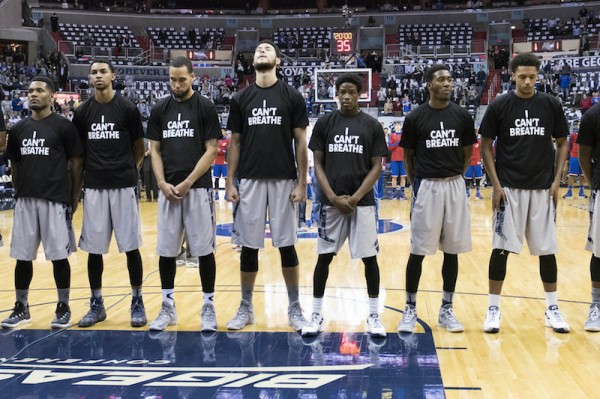
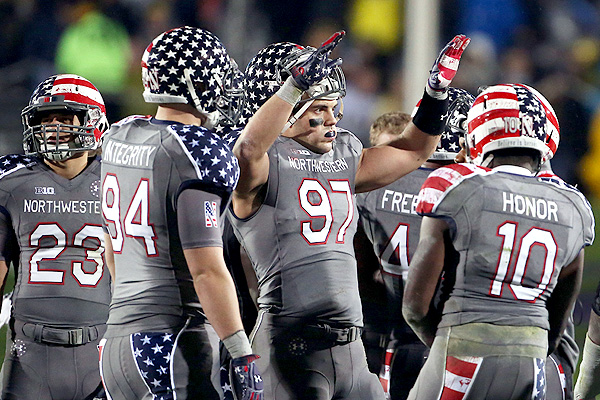
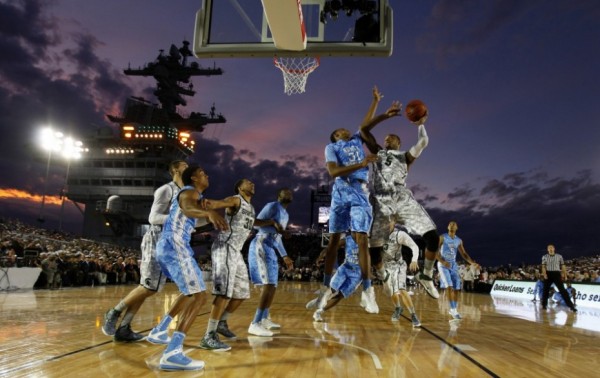
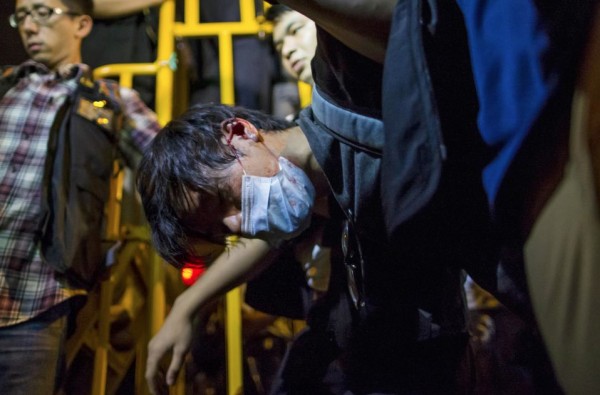
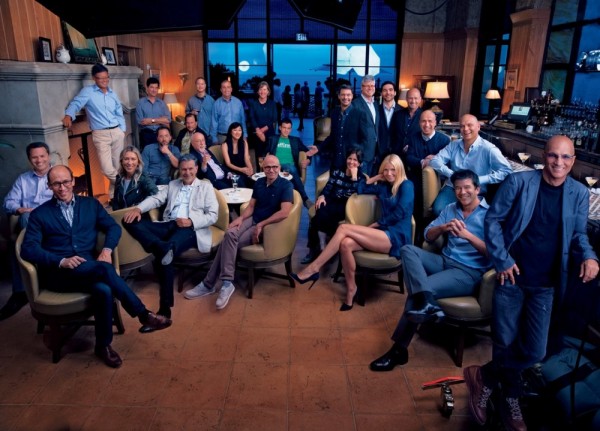
Reactions
Comments Powered by Disqus